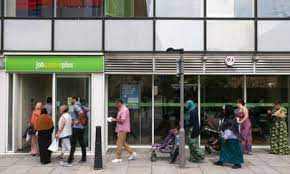Five charts explaining the UK’s economic prospects in 2024

London: The UK is entering an election year with the economy struggling to grow as households and businesses come under pressure from rising borrowing costs, higher taxes and elevated living expenses.
Rishi Sunak is expected to send voters to the polls in 2024 having declared victory on his primary economic target to halve inflation in 2023. However, the Bank of England has warned the UK is facing a 50-50 chance of a recession, while living standards are on track to be lower at the end of the parliament than they were at the start of it for the first time on record.
Here are five charts underpinning the UK’s economic prospects in 2024.
Inflation has fallen from more than 10% in January 2023 to 3.9% in November, driven mainly by cooling energy prices. However, the annual rate has stuck at persistently higher levels than anticipated, as the UK grapples with the highest rate in the G7.
While inflation is expected to continue to fall in 2024, the Bank is forecasting it to remain above its government-set target until the end of 2025, maintaining pressure on households. Lower inflation does not mean prices are coming down, only that they are rising less quickly.
Financial markets are predicting that cooling inflation and weak economic growth will force the Bank to start cutting interest rates from the current level of 5.25% from as early as the summer, as central banks across advanced economies begin to dial back the toughest increase in borrowing costs for decades.
However, there are risks inflation could remain persistently high amid geopolitical tensions and a tight UK labour market. The Bank has said it is watching closely for signs of inflation persistence from pay growth and prices in the services sector.
Economic activity has slowed to a crawl in recent months, with gross domestic product (GDP) unexpectedly shrinking in October, according to the latest official figures, as households come under sustained pressure from higher living costs.
The Bank of England has warned there is a 50-50 chance of a recession, beginning around the time a spring general election could be held, amid the impact from higher borrowing costs. It expects zero growth for 2024 as a whole.
Sunak has placed growing the economy among his top priorities after years of lacklustre performance. While growth proved more resilient to the shocks of the Covid pandemic and energy crisis than anticipated in 2023, the Office for Budget Responsibility (OBR) said in November that it expected the UK economy to grow more slowly over the coming years. It is slightly more upbeat than the Bank, pencilling in growth of 0.7% for 2024 – still less than half the annual average growth rate between 1998 and the 2008 financial crisis.
Weak activity and higher borrowing costs are expected to weigh heavily on employers’ hiring intentions in 2024, with forecasters anticipating a rise in unemployment over the course of the year.
The UK’s jobless rate has remained at historically low levels over recent months despite pressure on the economy, as employers struggle to fill near-record numbers of job vacancies. However, the number of job openings has fallen in recent months as hiring demand fades.
The OBR forecasts unemployment will rise to a peak of 1.6 million people (4.6% of the labour force) by the second quarter of 2025, up from the current level of about 1.5 million (4.2%).
With weaker hiring demand and cooling inflation, average annual pay growth is expected to fall to about 3.7% in 2024 and 2.2% in 2025, down from a peak of about 8% in 2023.
Taxes as a share of the economy are on track to reach the highest sustained levels since Clement Attlee’s postwar Labour government 1945 to 1951 – even after the chancellor, Jeremy Hunt, cut national insurance and offered tax relief on business investment at the autumn statement.
Fuelled by a six-year “stealth” freeze on income tax thresholds, revenues for the exchequer are on course to reach almost 38% of GDP by 2028-29, significantly above the pre-pandemic level of about 33%.
Hunt is expected to use his spring budget on 6 March to announce electioneering tax cuts before the general election. However, he is constrained by a commitment to reduce the UK’s national debt as a share of the economy within five years.
The OBR forecast at the autumn statement that Hunt would meet his target with about £13bn to spare. But this was predicated on plans that included a sharp £6bn rise in fuel duty this spring, which the chancellor is unlikely to apply, and a new austerity drive after the general election.
The Bank of England’s most aggressive cycle of interest rate rises in decades has fuelled an explosion in housing costs, triggering a timebomb in the mortgage market. Most home loans have a fixed rate – meaning higher costs come with a lag.
About half of all mortgages have repriced since December 2021. A further 5m are expected to be hit by 2026. For the typical owner-occupier rolling off a fixed rate between the summer of this year and the end of 2026, the Bank expects monthly repayments to increase by about £240, a jump of about 39%.





